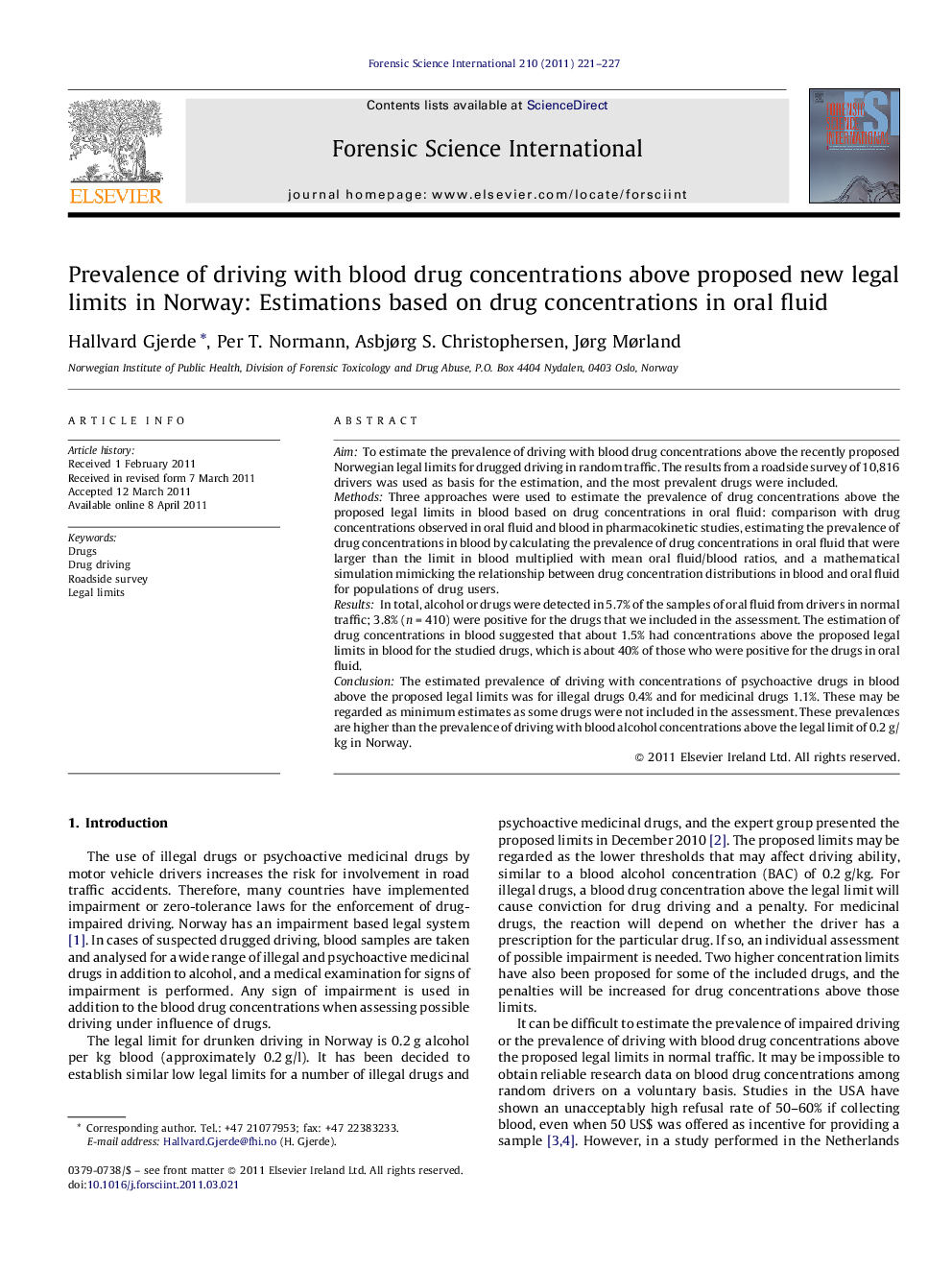| Article ID | Journal | Published Year | Pages | File Type |
|---|---|---|---|---|
| 96641 | Forensic Science International | 2011 | 7 Pages |
AimTo estimate the prevalence of driving with blood drug concentrations above the recently proposed Norwegian legal limits for drugged driving in random traffic. The results from a roadside survey of 10,816 drivers was used as basis for the estimation, and the most prevalent drugs were included.MethodsThree approaches were used to estimate the prevalence of drug concentrations above the proposed legal limits in blood based on drug concentrations in oral fluid: comparison with drug concentrations observed in oral fluid and blood in pharmacokinetic studies, estimating the prevalence of drug concentrations in blood by calculating the prevalence of drug concentrations in oral fluid that were larger than the limit in blood multiplied with mean oral fluid/blood ratios, and a mathematical simulation mimicking the relationship between drug concentration distributions in blood and oral fluid for populations of drug users.ResultsIn total, alcohol or drugs were detected in 5.7% of the samples of oral fluid from drivers in normal traffic; 3.8% (n = 410) were positive for the drugs that we included in the assessment. The estimation of drug concentrations in blood suggested that about 1.5% had concentrations above the proposed legal limits in blood for the studied drugs, which is about 40% of those who were positive for the drugs in oral fluid.ConclusionThe estimated prevalence of driving with concentrations of psychoactive drugs in blood above the proposed legal limits was for illegal drugs 0.4% and for medicinal drugs 1.1%. These may be regarded as minimum estimates as some drugs were not included in the assessment. These prevalences are higher than the prevalence of driving with blood alcohol concentrations above the legal limit of 0.2 g/kg in Norway.
